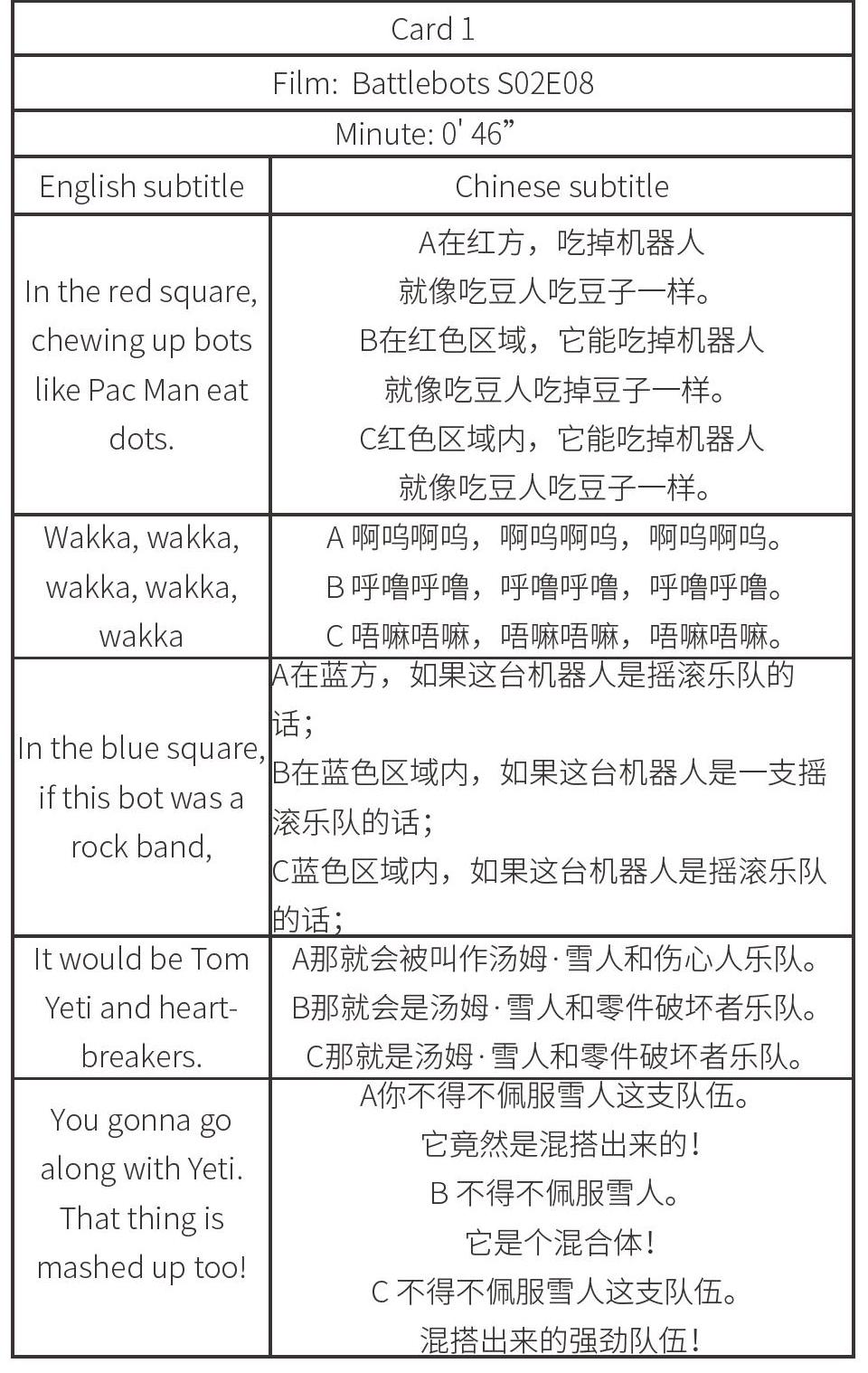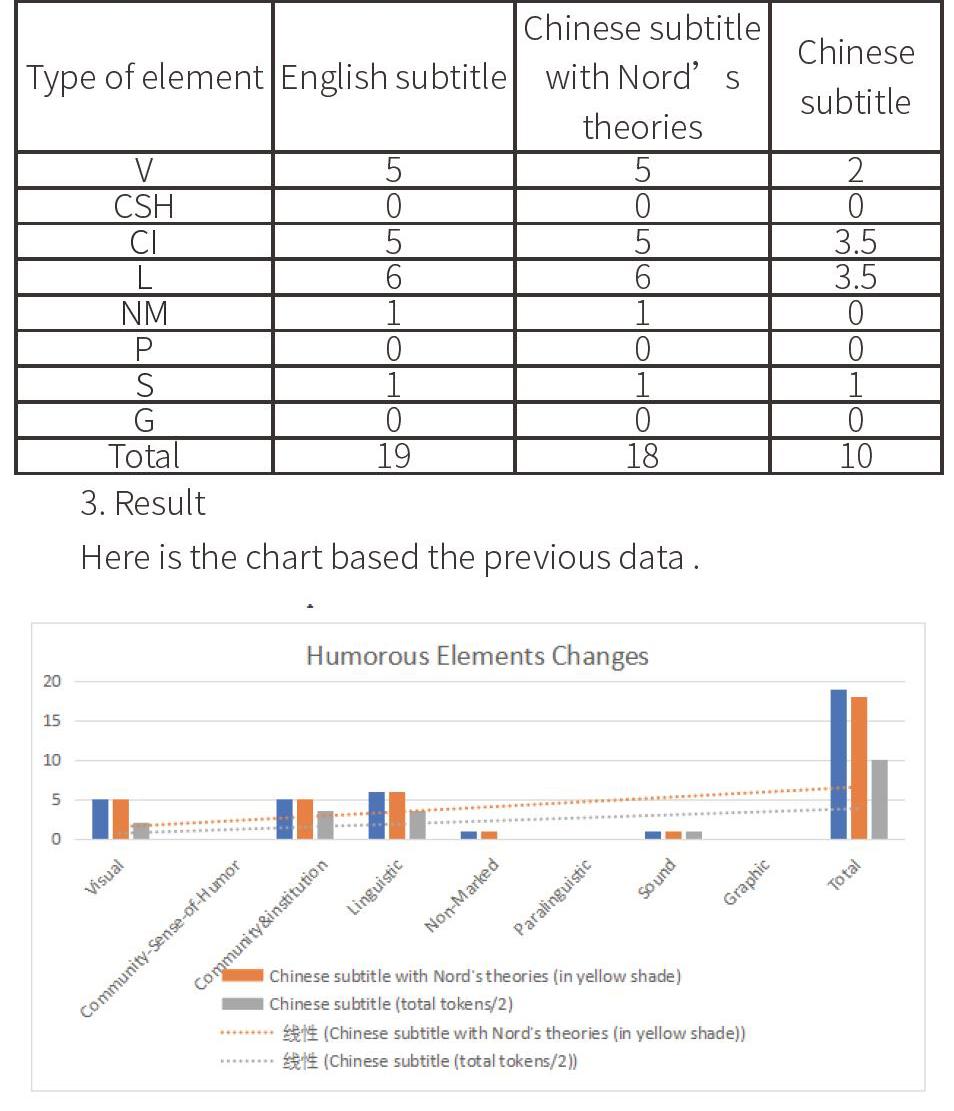Translation for Humors
2020-10-21田一农


【Abstract】This article calls for greater attention from researchers into the barriers of translating humors from English to Chinese in subtitling. It aims to explore translation techniques in humor and to establish how humor can be translated in subtitling by adopting Nords theories for English-Chinese translation. The study will modify the taxonomy by Juan José Martínez?Sierra (2005) to analyse English and Chinese subtitles from Battlebots. The analysis sheds light on the importance of combining translation theories with translators experience.
【Key words】Subtitle translation; Battlebots; Humor; Introduction
【作者簡介】田一农(1995-),女,山东人,西南大学/西悉尼大学,研究生,在读,研究方向:英语笔译。
1. Introduction
As an essential part in communication, humor is also a crucial factor of innumerable literary works. Translation studies is an interdisciplinary field of research. So is humor studies. (Zabalbeascoa, 2011). Therefore, combining humor translation with theories for non-English translators is not easy.
Spanakaki (2007) found that breaking humor down into isolated components mitigates the confusion by problematic utterances or phrases. Language sample analysis with Delabastita s theories was used to summarize subtitling translation tools. It also noted that cultural products cross borders only in one direction in American TV serials, laying the foundations of this study. However, it was restricted to logical analysis without data. Hsiao investigated how Chinese audiences respond to subtitlers translations in online forums. However, there is a limited number of participants. Therefore, more research need to be undertaken.
Hence, a research question has been put forward.
Are Nords translation theories practical for subtitlers to translate humor in Battlebots?
My hypothesis is that Nords translation theories are practical.
2. The Study
2.1 Subject and Data
The subject is a video clip of Battlebots. The English and Chinese subtitles are translated by three subtitlers, named as A, B and C. They have at least three years experience of translating Battlebots. One of them use Nords theories to translate subtitles.
2.2 Methodology
The taxonomy card by Juan José Martínez?Sierra (2005) involves eight humorous elements, including community-and-Institution, Community-Sense-of-Humor, Linguistic, Visual, Graphic, Paralinguistic, Sound, and Non-Marked. Then, questionnaires are given to twenty five Chinese native speakers. The card is presented below.
3. Result
Here is the chart based the previous data .
It can be seen that the number of humor elements in Chinese without using theories are smaller than that in Chinese with theories and in English. Visual and linguistic elements witness the most significant changes of declining. The number of non-marked and sound elements remain the same.
4. Conclusion
The survey shows that 40% audiences like the version with theories while only 29.6% audiences like the version without theories. The previous research highlights that more humorous elements are translated with the help of theories. Therefore, using Nord s translation theories improves the translation quality. However, the number of Chinese native speakers may be limited. Moreover, on the one hand, if a participant is interested in engineering and science, a positive feedback will be delivered.
References:
[1]Hsiao, C. H. The cultural translation of US television programs and movies: Subtitle groups as cultural brokers in China (doctoral dissertation, UCLA)[J].2014.
[2]Jankowska, A. Translating humor in dubbing and subtitling [J]. Translation Journal,2009,13(2):134-48.
[3]Spanakaki, K. Translating humor for subtitling. Translation Journal,2007,11(2):1-24.
